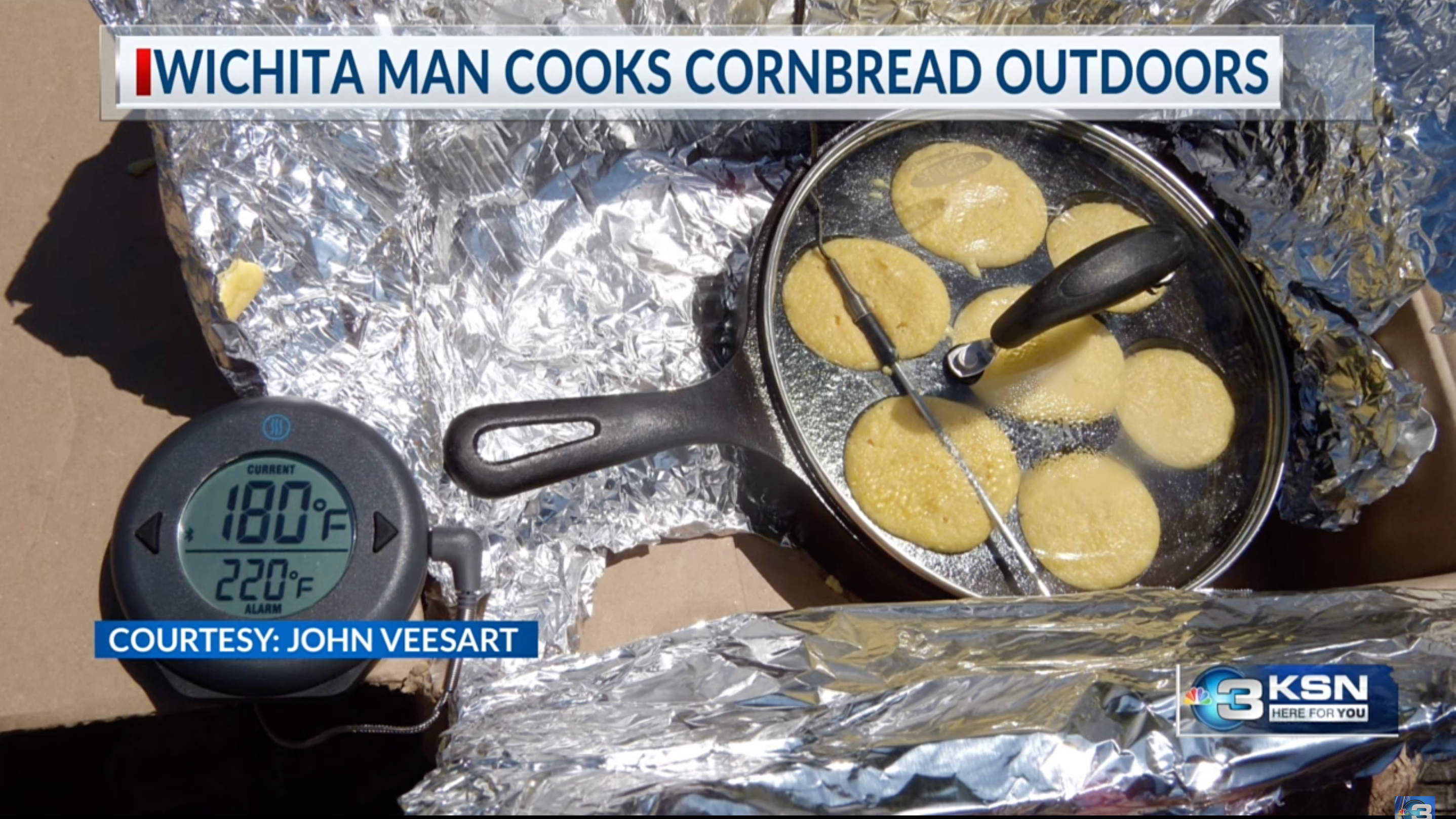A Scientist Explains How Food Cooks Outside During A Heat Wave
A Wichita man baked cornbread outside in a skillet during a heat wave. How does that work?
The United States is currently gripped by heat waves spanning virtually every region of the country, and every time there's such a weather event, it seems like someone tries frying an egg on the sidewalk (or bakes something in their car). In this year's version, a man in Wichita, Kansas attempted to bake cornbread muffins outside using only the heat from the atmosphere. Sure enough, it appears he was successful.
John Veesart sent photos of his experiment to local Wichita news station KWCH, which showed the progression of corn muffin batter to its final product. Veesart's setup included a vintage cast iron aebleskiver skillet tucked into an aluminum-foil-lined cardboard box. Granted, the finished muffins didn't exactly have a golden brown hue to them, but Veesart told the news station that after having tasted them, he could confirm they were indeed cooked through. The whole experiment took nearly six hours to complete.
Veesart included a temperature probe to display just how hot it got inside the cast iron skillet, which had a glass lid on top, allowing the scorching sunlight to heat the vessel. The photos indicated temperatures of up to 180 degrees Fahrenheit.
Can you actually bake food outside during a heat wave?
I contacted Subha R. Das, Associate Professor of Chemistry at Carnegie Mellon University, to ask him about the science of cooking food outside on a way-too-hot summer day. Das has previously given us insight into whether or not booze baked into desserts could get kids inebriated; what makes horseradish spicy; and how numbing agents work in food.
After examining the photos of Veesart's rig, Das explained how the method resulted in a fully baked corn muffin.
"The cardboard box with foil is a form of solar oven... and the cast iron skillet really helps," Das tells The Takeout via email. "It has a high heat capacity (so it can store heat) but low thermal conductivity, meaning it takes a while for it to lose the heat it has—all the better for cooking (or baking if you put [a] lid on it). The cardboard box is also useful as cardboard is an insulator, so it keeps heat trapped."
Das also noted that there are existing solar cardboard oven designs that already use these principles, such as this one developed by a Norwegian inventor. The design is simple: just one cardboard box nested within another, lined with foil. An acrylic sheet traps in the heat, and the temperature within the oven can reach boiling and baking temperatures—but nothing high enough to burn the cardboard itself.
So yes, it's definitely possible to bake something outside during a heat wave and plenty of sunshine, if your setup can trap and store enough heat. That's pretty cool, though I'm not sure cornbread baked that way would be very moist and tender, and Das doesn't think so, either.
"To be honest, 5.5 hours at recent Wichita temps," Das said, "I'd be a bit concerned that the cornbread [was] overcooked."
